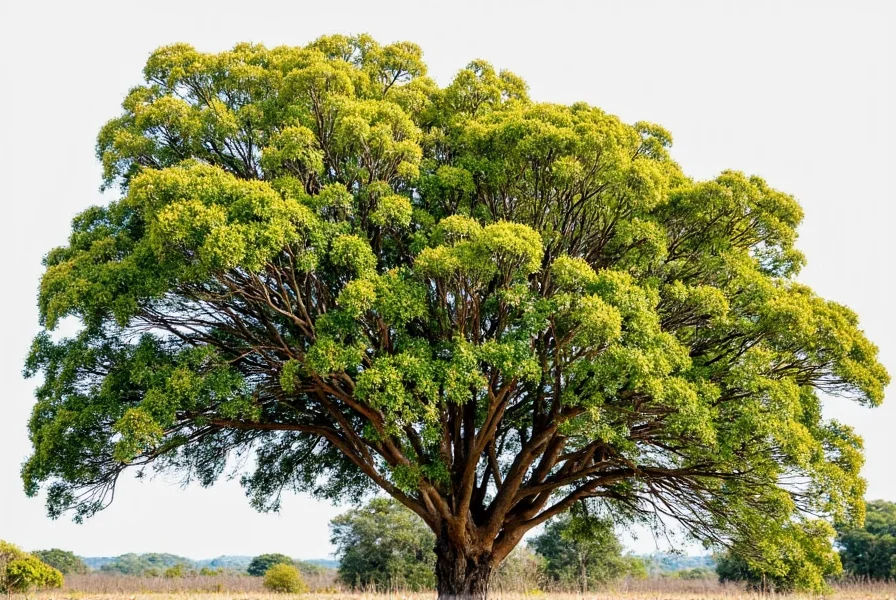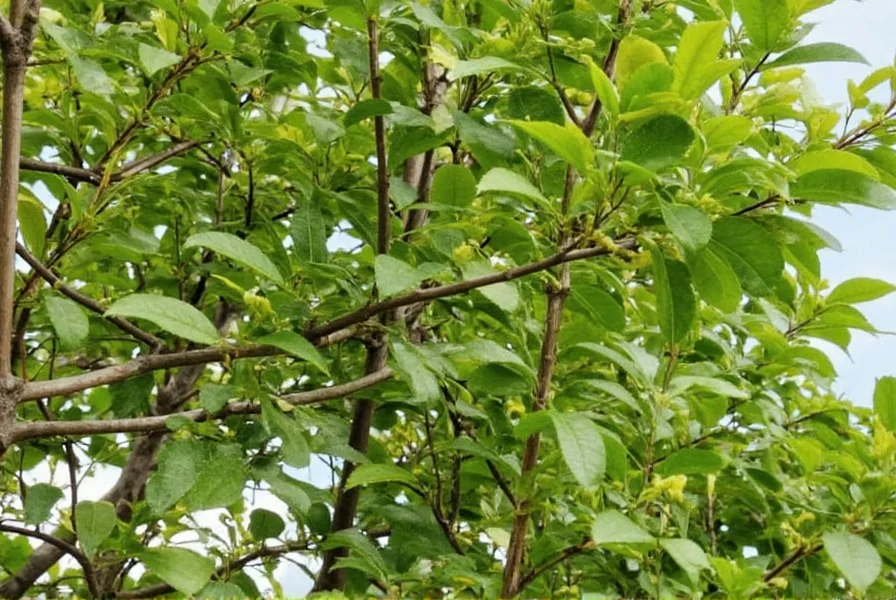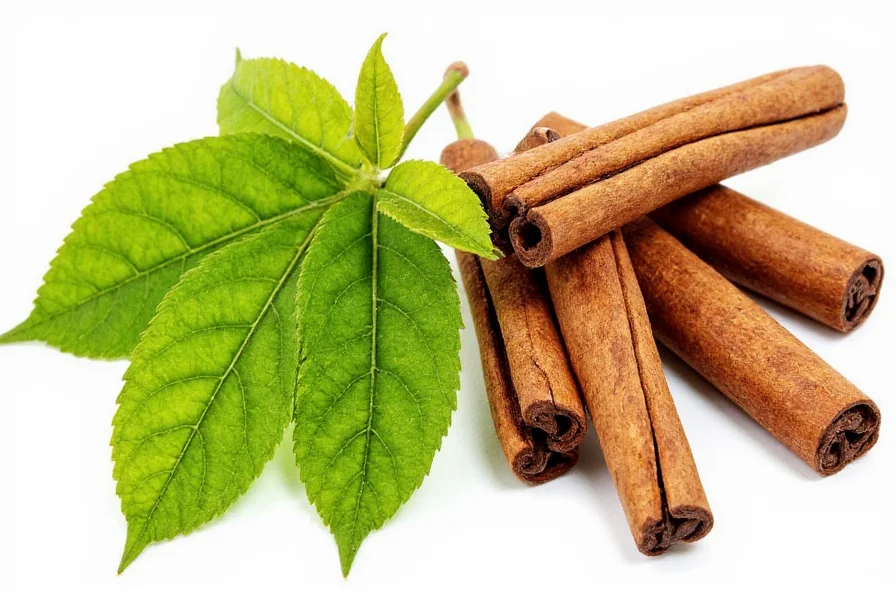The cinnamon tree represents one of the world's most beloved and historically significant spice sources. Understanding this remarkable plant goes beyond simply recognizing the familiar spice—it connects us to centuries of trade, cultural traditions, and botanical science. For gardeners, chefs, and health-conscious consumers alike, knowing the difference between true cinnamon and its common substitutes can significantly impact flavor profiles and potential health benefits.
Botanical Classification and Historical Significance
Cinnamomum verum belongs to the Lauraceae family, which includes approximately 250 species of aromatic trees and shrubs. The name "cinnamon" derives from the Greek word kinnámōmon, which likely originated from Hebrew or Phoenician terms. Historical records show cinnamon was highly valued in ancient Egypt, mentioned in biblical texts, and traded along spice routes connecting Asia with Europe and the Middle East.
Unlike the more commonly available Cassia cinnamon (Cinnamomum cassia), which dominates supermarket shelves, true cinnamon comes exclusively from Cinnamomum verum. This distinction matters because Cassia contains significantly higher levels of coumarin, a compound that can be harmful in large quantities. Understanding cinnamon tree species differences helps consumers make informed choices about their spice consumption.
Physical Characteristics of Cinnamon Trees
Mature cinnamon trees typically reach 10-15 meters in height with smooth, grayish bark. The leaves grow in pairs opposite each other along the branches, measuring 7-18 cm long and 3-6 cm wide, with a distinctive ovate shape and pointed tip. When young, the leaves display a reddish hue that matures to dark green with a glossy upper surface.
During spring, the trees produce small, yellowish-white flowers in clusters called panicles. These develop into small, dark purple berries containing a single seed. However, it's the inner bark of young branches that produces the valuable spice. When harvested and processed, this bark curls into the familiar quills or "sticks" we recognize as cinnamon.
| Characteristic | Ceylon Cinnamon (C. verum) | Cassia Cinnamon (C. cassia) |
|---|---|---|
| Origin | Sri Lanka, Southern India | China, Indonesia |
| Bark Layers | Multiple thin, delicate layers | Single thick, hard layer |
| Coumarin Content | Low (0.004%) | High (1-5%) |
| Flavor Profile | Sweet, subtle, complex | Strong, spicy, slightly bitter |
Growing Conditions for Cinnamon Trees
Cinnamon trees thrive in tropical climates with specific environmental requirements. They prefer temperatures between 20-30°C (68-86°F) and cannot tolerate frost. These trees grow best in USDA hardiness zones 9-11, though they can survive in zone 8 with proper protection.
When considering how to grow cinnamon tree successfully, soil conditions prove critical. They require well-draining, sandy loam soil with a pH between 4.5 and 5.5. While they need consistent moisture, cinnamon trees cannot tolerate waterlogged conditions. In their native habitats, they often grow in lowland rainforests with high humidity levels (70% or higher).
For home gardeners outside tropical regions, growing cinnamon trees in containers offers the best chance of success. Using a quality potting mix with added perlite for drainage, and placing the container in a warm, humid location with filtered sunlight can yield good results. During winter months, maintaining proper cinnamon tree care indoors requires careful attention to humidity levels and watering schedules.
Harvesting and Processing Techniques
The process of transforming cinnamon tree bark into the familiar spice involves precise timing and technique. Harvesters select two to three-year-old shoots, cut them close to the ground, and remove the outer bark. They then carefully separate the inner bark using a specialized knife, which naturally curls into quills as it dries.
Drying occurs in shaded, well-ventilated areas for several days until the quills become brittle. Higher quality cinnamon consists of multiple thin layers that easily crumble when bent, while lower quality varieties often contain thicker, single-layer quills. Understanding how cinnamon is harvested from trees reveals why true cinnamon commands a higher price than Cassia varieties.
Practical Applications Beyond the Kitchen
While most people associate cinnamon with baking and cooking, the cinnamon tree offers numerous applications. Traditional medicine systems have used cinnamon for centuries to address digestive issues, respiratory conditions, and as an antimicrobial agent. Modern research suggests potential benefits for blood sugar regulation and inflammation reduction, though more studies are needed.
Cinnamon essential oil, distilled from the bark or leaves, finds applications in aromatherapy, natural cleaning products, and even as an insect repellent. The leaves themselves can be used to make tea, while the berries serve as a less common spice alternative. When exploring cinnamon tree uses beyond spice, it's important to note that therapeutic applications should complement—not replace—professional medical advice.
Growing Cinnamon Trees Outside Native Regions
For gardeners in temperate climates, growing cinnamon trees presents unique challenges but remains possible with proper care. Container cultivation allows for greater environmental control, with the ability to move plants indoors during colder months. Selecting dwarf varieties can make growing cinnamon tree in containers more manageable for home growers.
Key considerations for non-tropical cultivation include:
- Maintaining consistent warmth (above 18°C/65°F year-round)
- Providing high humidity through misting or humidity trays
- Using filtered sunlight to prevent leaf scorch
- Watering with room-temperature water to avoid shocking roots
- Regular pruning to control size and encourage bushier growth
During winter months, reducing watering frequency while maintaining humidity proves essential for preventing root rot. Fertilizing with a balanced, organic fertilizer during the growing season supports healthy development. Patience proves crucial, as cinnamon trees typically take 2-3 years before they're ready for the first harvest.
Cinnamon Tree Pests and Diseases
Like all plants, cinnamon trees face potential threats from pests and diseases. Common issues include:
- Cinnamon bark borers: These insects tunnel into the bark, damaging the tree's vascular system
- Scale insects: They attach to leaves and stems, sucking sap and weakening the plant
- Root rot: Caused by overwatering or poor drainage, particularly problematic in container-grown trees
- Leaf spot diseases: Fungal infections that create discolored spots on foliage
Organic pest management strategies work best for cinnamon tree pest control. Neem oil applications, introducing beneficial insects, and maintaining proper air circulation help prevent infestations. For disease prevention, ensuring proper watering practices and avoiding overhead watering significantly reduces fungal issues.

Sustainable Cinnamon Production Practices
As demand for true cinnamon grows, sustainable harvesting practices become increasingly important. Traditional cinnamon farming involves cutting young shoots rather than felling entire trees, making it a renewable resource when managed properly. However, deforestation and unsustainable practices in some regions threaten natural cinnamon habitats.
Consumers seeking ethically sourced cinnamon products should look for certifications indicating sustainable farming practices. Supporting small-scale farmers who use traditional harvesting methods helps preserve both the cinnamon trees and the cultural knowledge associated with their cultivation.

Conclusion
The cinnamon tree represents far more than just a source of spice—it embodies centuries of cultural exchange, botanical science, and culinary tradition. Understanding the differences between true cinnamon and its substitutes, along with proper cultivation techniques, empowers consumers and gardeners to make informed decisions. Whether you're a home gardener attempting to grow your first cinnamon tree or a culinary enthusiast seeking the finest spice, appreciating the journey from tree to table enhances the experience of using this remarkable botanical treasure.
Frequently Asked Questions
What's the difference between Ceylon cinnamon and Cassia cinnamon?
Ceylon cinnamon (Cinnamomum verum) features multiple thin, delicate layers forming tight quills, a lighter brown color, and a sweeter flavor. It contains significantly lower coumarin levels (0.004%) compared to Cassia (1-5%), making it safer for regular consumption. Cassia has a single thick layer, darker color, and stronger, slightly bitter flavor.
Can I grow a cinnamon tree indoors?
Yes, you can grow a cinnamon tree indoors in a container with proper care. The tree requires warm temperatures (above 65°F year-round), high humidity (70%+), and bright, filtered sunlight. Use well-draining potting mix, maintain consistent moisture without waterlogging, and expect slower growth compared to tropical outdoor conditions.
How long does it take for a cinnamon tree to produce harvestable bark?
Cinnamon trees typically require 2-3 years of growth before the first harvest. Harvesters select two to three-year-old shoots, which produce the highest quality inner bark. The tree continues producing harvestable shoots throughout its lifespan, with new growth after each harvest, making cinnamon a renewable resource when managed sustainably.
Why is Ceylon cinnamon more expensive than other cinnamon varieties?
Ceylon cinnamon costs more due to its labor-intensive harvesting process (requiring skilled workers to separate delicate inner bark), lower coumarin content, superior flavor profile preferred by chefs, and limited production primarily from Sri Lanka compared to the more widely cultivated Cassia cinnamon.
What are the health benefits of true cinnamon compared to Cassia?
True cinnamon offers similar potential health benefits to Cassia but with significantly lower coumarin content. While both may help regulate blood sugar and have anti-inflammatory properties, Cassia's high coumarin levels can cause liver damage with regular consumption. Ceylon cinnamon provides beneficial compounds without the same health risks, making it preferable for regular medicinal use.











 浙公网安备
33010002000092号
浙公网安备
33010002000092号 浙B2-20120091-4
浙B2-20120091-4